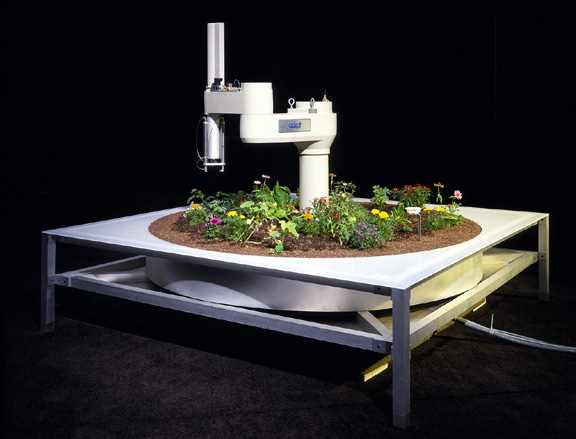
In 1995, artist Ken Goldberg fitted a $40,000 robot arm with a webcam and mounted it in a trough so that “virtual gardeners” from anywhere in the world could plant seeds and water them. After every hundred hits they were given the option to plant more seeds.
Organizers found that the users tended to discuss nature, technology, and interpersonal connections, with virtually no abusive language. They would ask one another to water their plants during vacations and would sometimes plant seeds “strategically” in order to be near one another. The community shared their sorrow at the death of one gardener, and a couple got engaged. One member wrote, “I am recovering from neck surgery and can not do anything. The place has been a life saver for me.” Altogether the project ran for nine years in Berkeley, California, and Linz, Austria.
“The public resonance of this installation was quite remarkable,” writes Oliver Grau in Virtual Art. “Up to this point in time, Goldberg had likened the culture of the Web as typical of that of hunter-gatherers. However, the telegarden was a symbolic model for a postnomadic society that anonymously and collectively tended plants on a minuscule piece of the earth. The members of this troup, who never actually came face to face, communicated with each other or were even aware of how many other virtual gardeners were logged in, were using the most modern medium of the time for this. Goldberg’s work was a collective intercontinental cultural production.”
